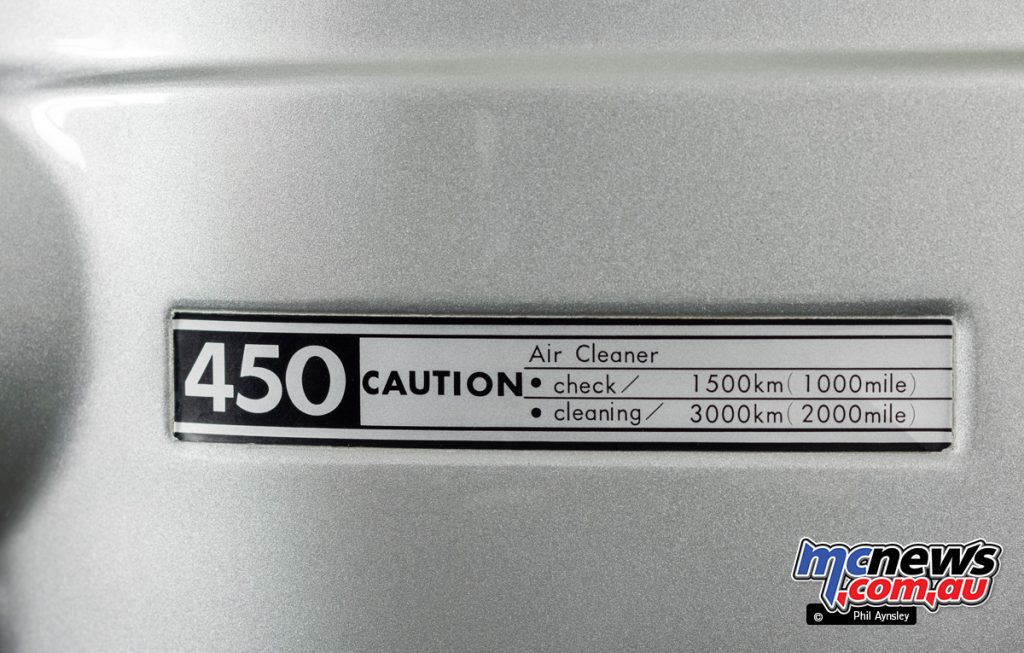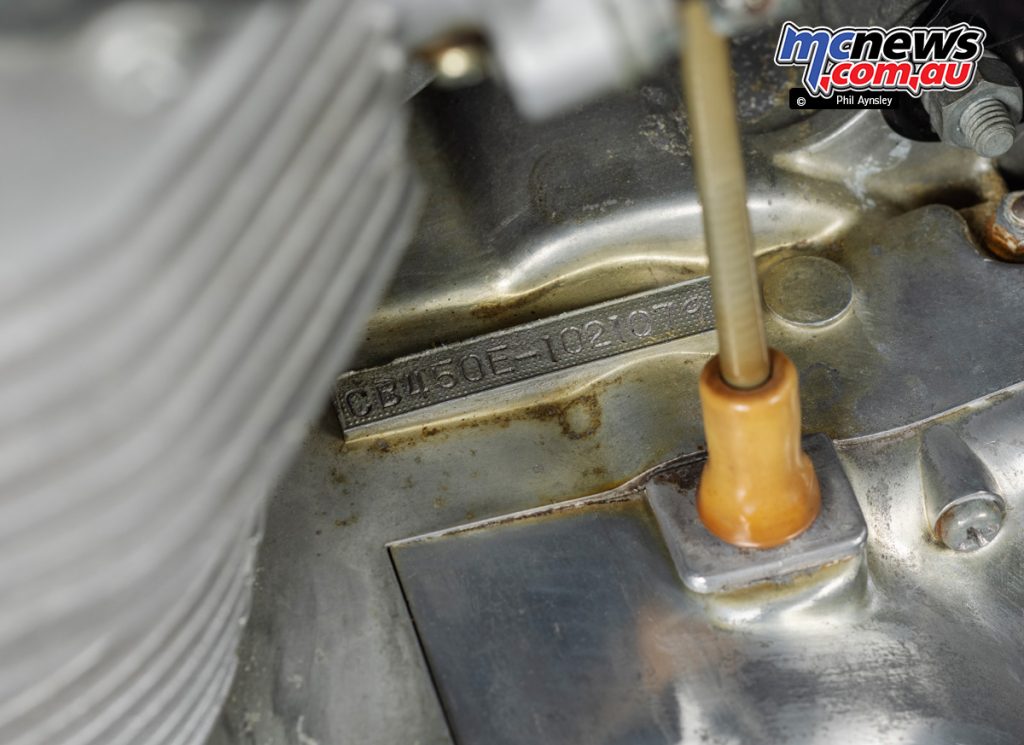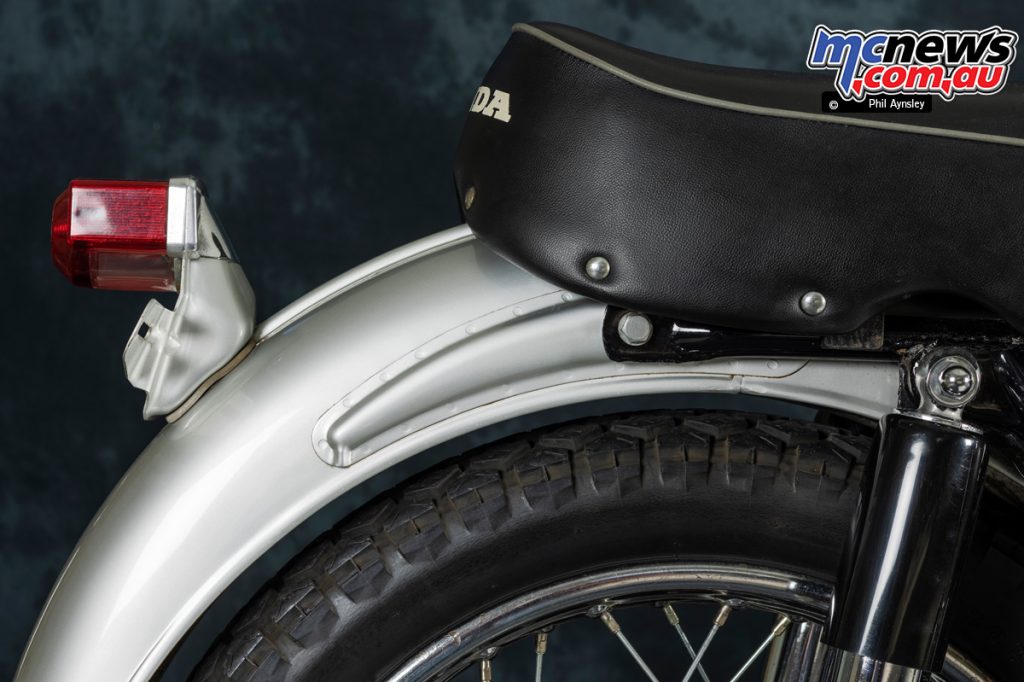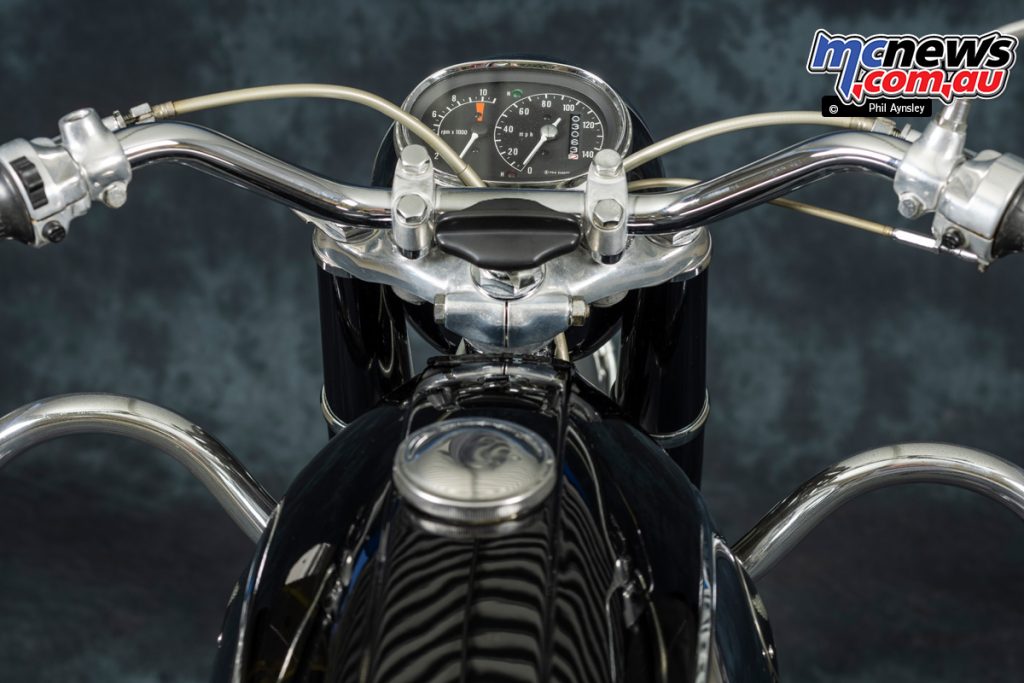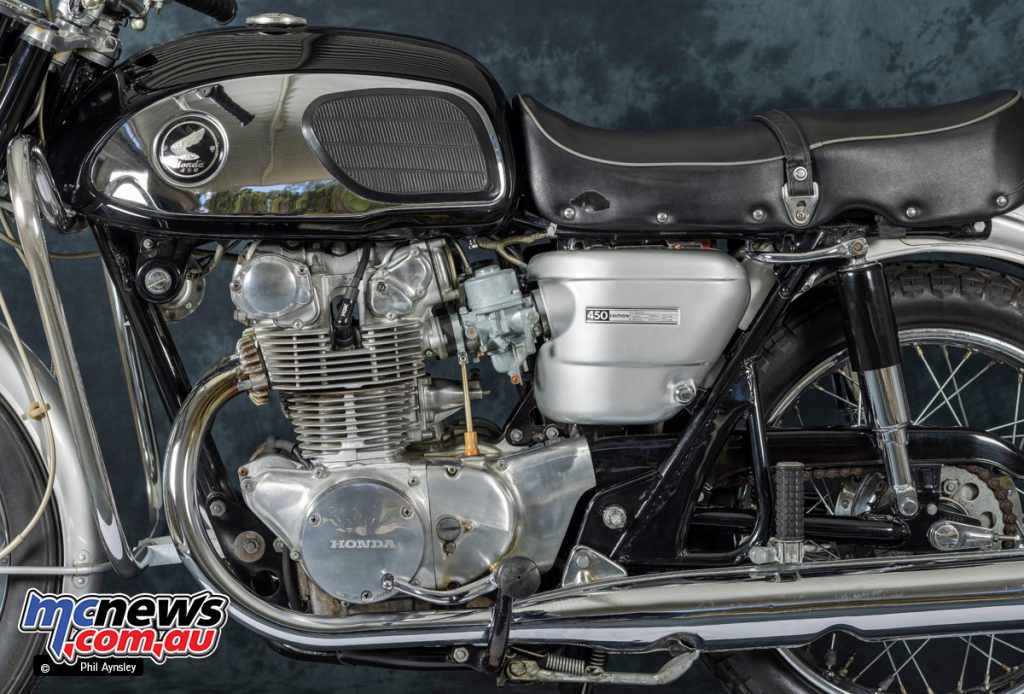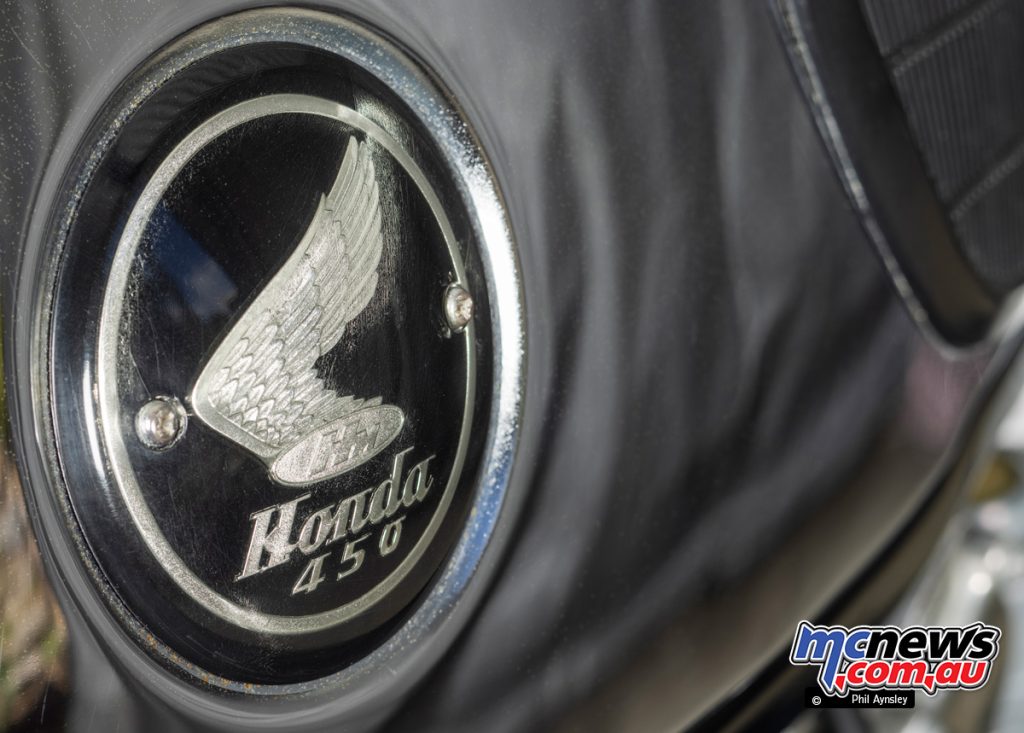Honda CB450
With Phil Aynsley
The introduction of the CB450 in 1965 was a milestone for Honda and the Japanese motorcycle industry.
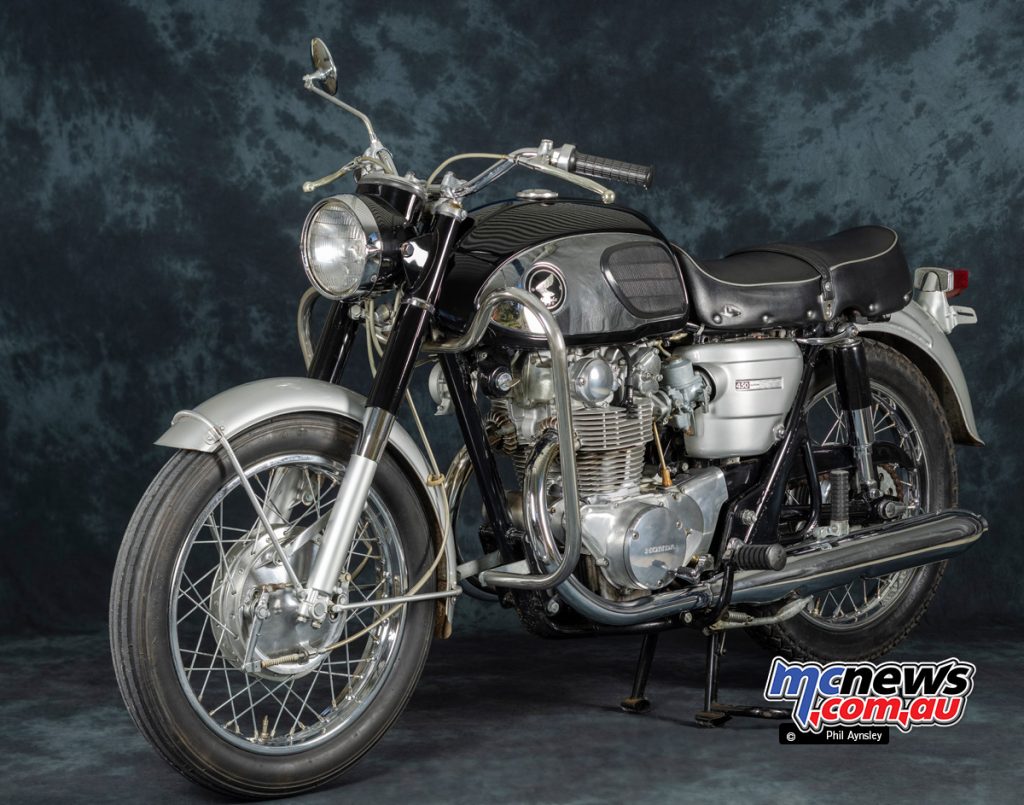
The bike was Honda’s first “big twin”, designed to compete against the British 500/650 cc twins of the period. It provided the very belated wake up call to the British manufactures who had for years dismissed smaller capacity Japanese bikes as a threat.
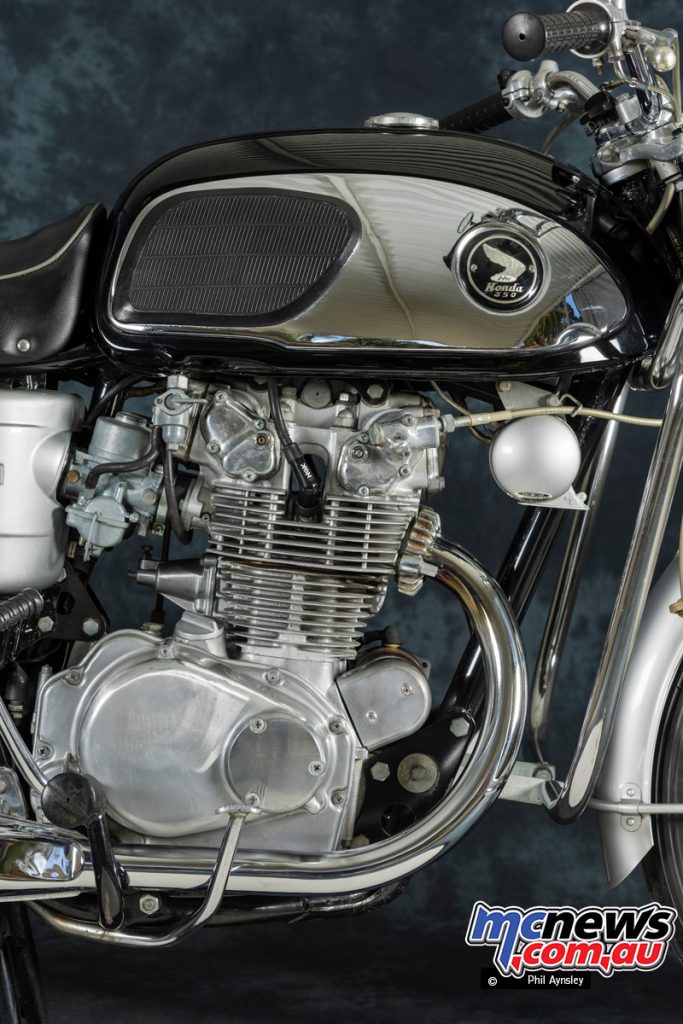
It was the first production motorcycle to feature DOHC and CV carburettors. Other advanced technologies for the time included torsion-bar valve control and an electric starter.
The combined speedo/tacho with its vertical odometer was also of interest.
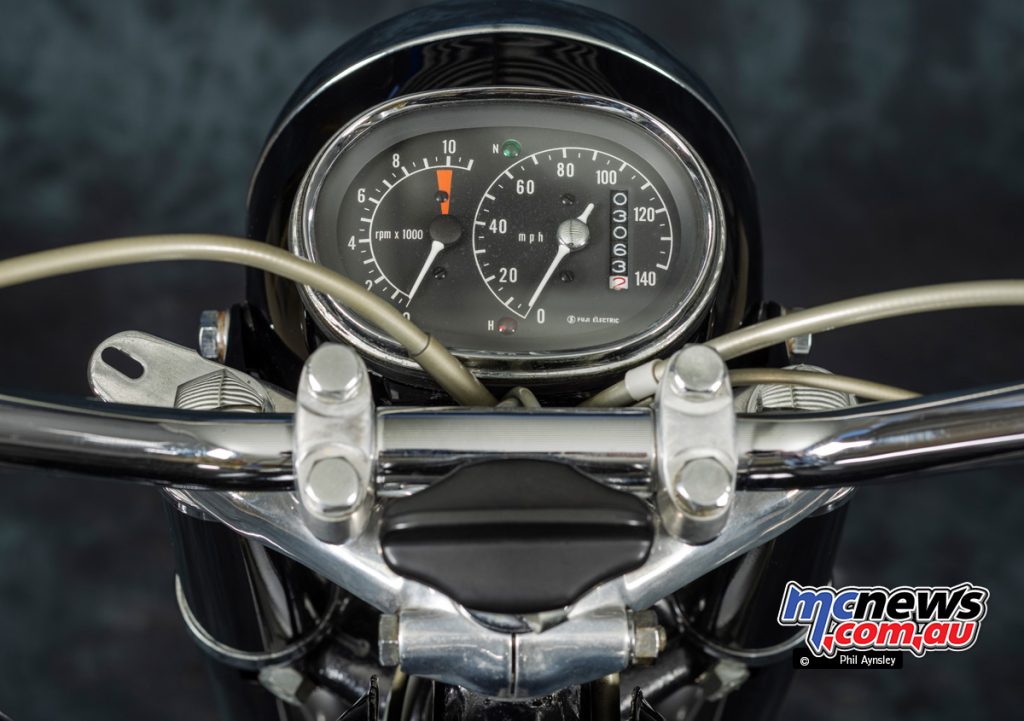
The K0’s four-speed gearbox was replaced by a five-speed unit in the 1968 K1 model. The K1 also had a longer wheelbase, larger capacity oil pump and revised styling.
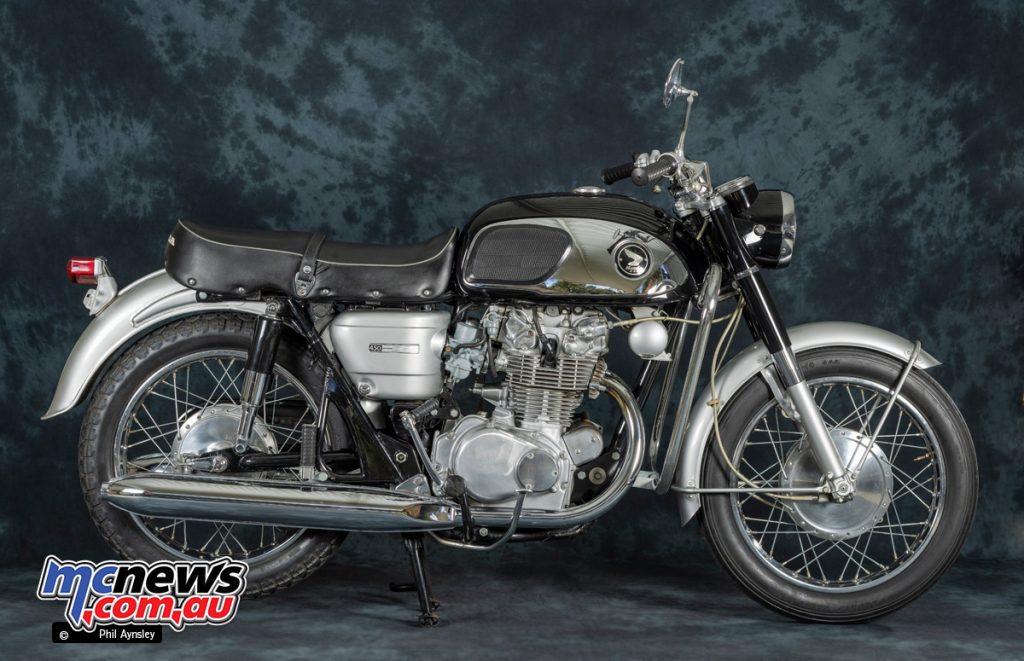
Although the CB450 never sold in quite the numbers hoped for, it continued in production until the K7 model of 1974 when it was replaced by the mildly updated CB500T.
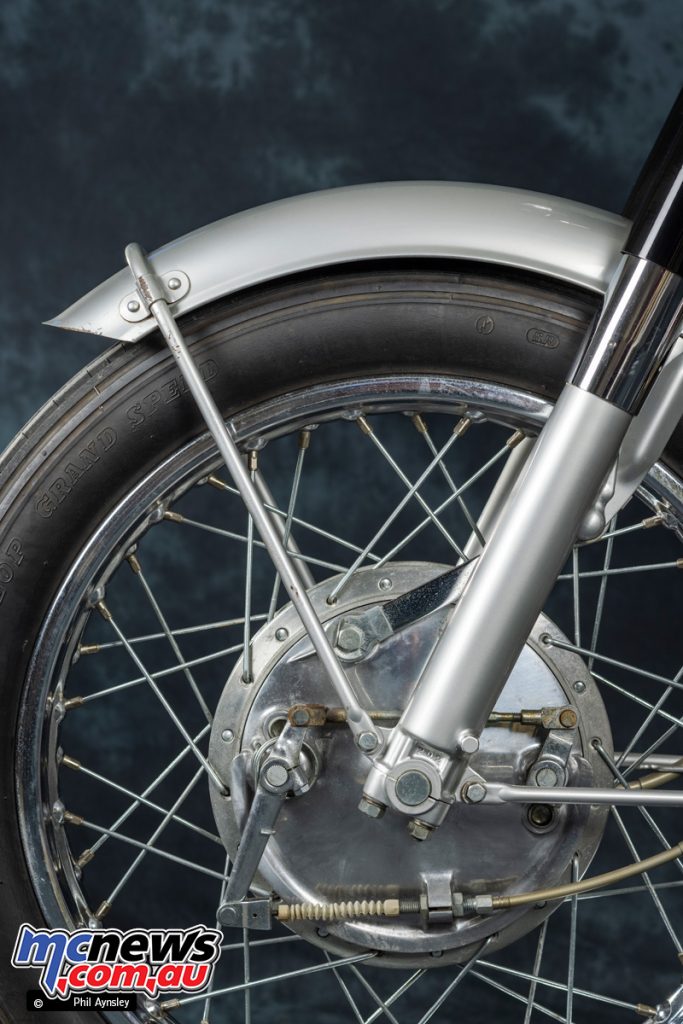
The bike photographed here is in original unrestored condition with 3063 miles on the clock.
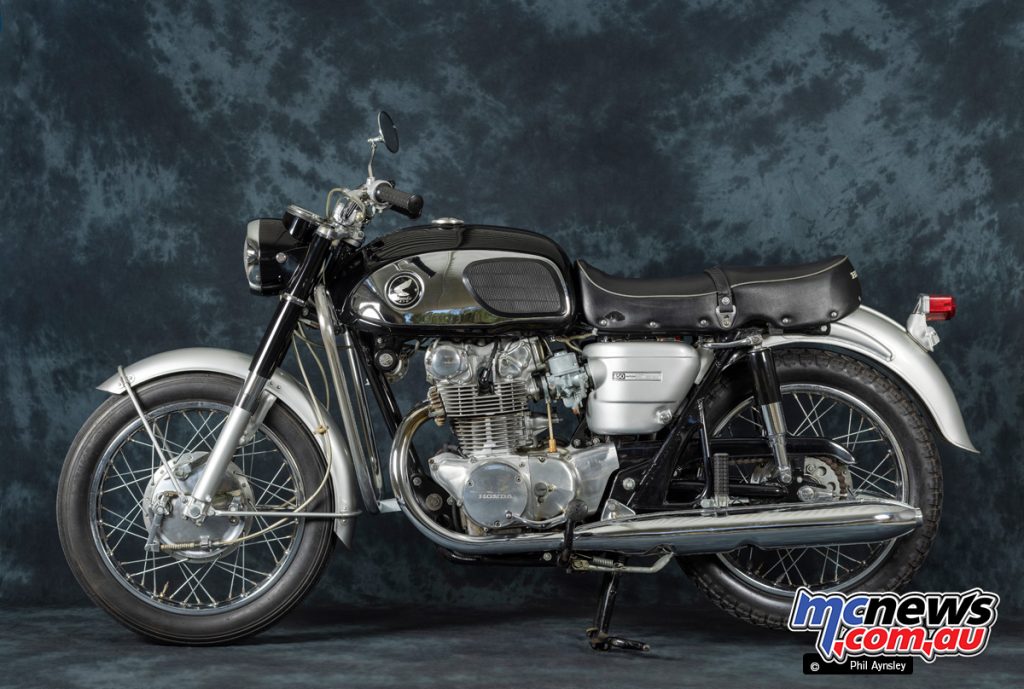
Power was 43 horsepower at 8500 rpm and dry weight was 187 kg, allowing for a top speed of 165 km/h.
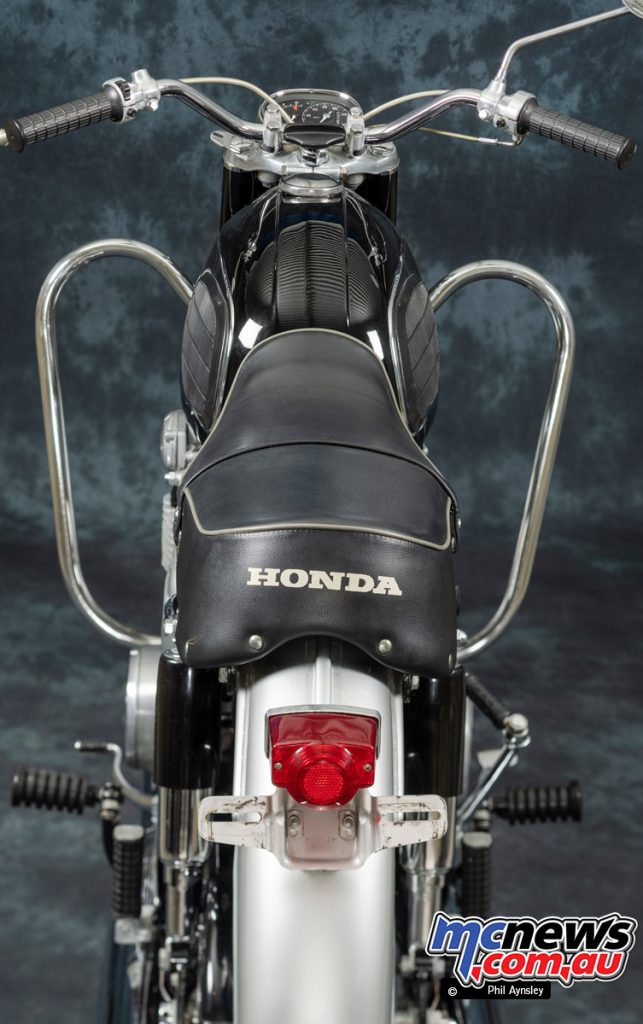
Honda CB450 Specifications
| Honda CB450 Specifications K0 | |
| Engine | Air-cooled, four-stroke parallel twin, DOHC, two-valve per cylinder, 445 cc |
| Bore x stroke | 70 x 57.8 mm |
| Compression | 9.0:1 |
| Induction | Dual 32 mm Keihin carburators |
| Ignition | Coil with auto advance, kick |
| Power | 45 hp @ 9000 rpm |
| Torque | 37.4 Nm @ 7000 rpm |
| Transmission | Four-speed |
| Frame | Tubular semi-duplex cradle, single downtube |
| Forks | Telescopic |
| Shocks | Dual shock absorbers |
| Brakes | Drum, Drum |
| Dry weight | 187 kg |
